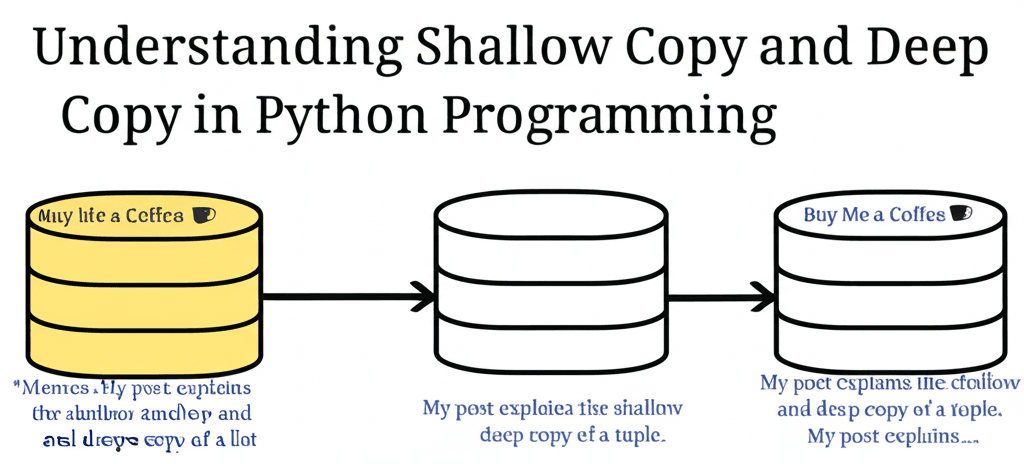Shallow copy and deep copy are fundamental concepts in Python programming that deal with how objects are duplicated and managed in memory. These techniques are essential for developers to avoid unintended side effects when working with mutable data structures. A shallow copy creates a new object, but it reuses existing references to nested objects, while a deep copy creates entirely new objects at all levels, ensuring complete independence.
Python provides built-in modules and operators to handle copying. The `copy` module, specifically the `copy()` and `deepcopy()` functions, is commonly used for this purpose. However, Python also supports shallow copy via slicing, the `list()` constructor, or the `dict()` constructor for certain types like lists and dictionaries.
In a shallow copy, changes to mutable elements inside a copied object can affect both the original and the copy because they reference the same underlying objects. For example, consider a list containing other lists. Modifying a nested list in the copy will alter it in the original as well. This can lead to bugs if not handled carefully.
Conversely, a deep copy makes a complete replica, including all nested objects, so modifications in one do not impact the other. This is particularly useful for complex data, such as nested dictionaries or custom objects, but it comes at the cost of higher memory usage and slower performance.
Let’s explore how shallow and deep copy work with common Python data structures. For instance, when copying a list, you can use slicing or the `copy()` method. Both achieve a shallow copy. Suppose you have a list of integers: my_list = [1, 2, [3, 4]]. Copying it shallowly results in two lists that reference the same sublist. If you change the sublist in the copy, it affects the original.
Similarly, for dictionaries, shallow copy can be done using dict.copy(). But again, the nested values share references. Shallow copy is efficient but requires caution with mutable elements.
Deep copy, on the other hand, uses deepcopy() to recursively copy all objects. For the same list example, deepcopy(None, my_list) would create a new sublist, so changes are isolated. This makes deep copy ideal for scenarios where mutability could cause issues, like in multithreading or data duplication processes.
Real-world applications include data processing, where shallow copy might suffice for immutable structures, and deep copy for task where complete isolation is needed. Python’s copy module handles much of this, but developers must understand the implications to optimize performance.
In summary, shallow copy and deep copy address memory management and data integrity in Python. By mastering these, programmers can write more robust and error-free code. Further exploration should include custom copy methods using the __copy__ and __deepcopy__ protocols.
For more details, refer to Python’s official documentation on the copy module.

Leave a Reply